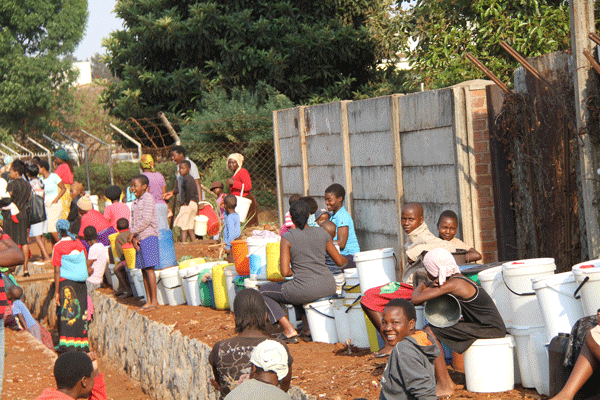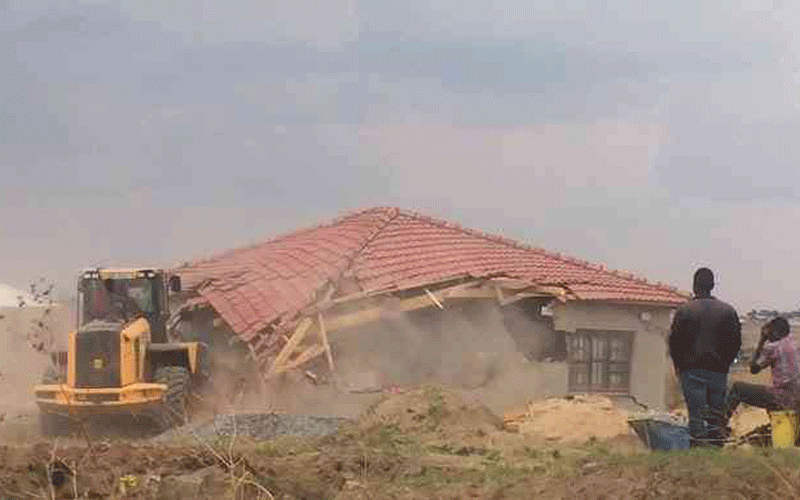
In Zimbabwe’s urban areas, the importance of water has been redefined as its scarcity sends people to great lengths to source the precious liquid.
environment By Chipo Masara

*Mary Ncube is a stay-at-home mother of two who resides in the high-density suburb of Budiriro in Harare. Since she gave birth three months ago, her relationship with water has been rekindled. She has to have large amounts of water in the house at all times, most of which she uses to clean up the baby and his clothes, as well as to maintain a clean environment in order to keep the menacing house flies away. Carrying out all that work has, however, become a feat that requires for her to gather great strength and determination each day. It is not the cleaning and taking care of the baby part that presents a problem for her. It is finding the water to use.
Because Ncube and her husband are tenants at a house where there isn’t a well or borehole, she has to fetch water from a house further down the road when council water is not available — and that’s almost every day. The service comes at a price; each family has to pay $5 per month to access the water. Although the well does not appear well-built enough to guarantee safe water, its proximity makes it attractive to Ncube, as well as many other families in the neighbourhood that equally depend on it for water.
Lately, however, the well owner has been complaining of the water level in the well going down almost to the point of drying up. As a measure, he has limited the amount of water any one family can gather to just 20 litres — an amount that will not do much for someone like Ncube, thus she now has to walk further down their neighbourhood in search of a house with a well deep enough to allow her to gather all the water she requires. That, however, has proved difficult as most wells in the area are drying up. Only a few households in the neighbourhood are privileged enough to have afforded installing boreholes — which are widely considered a preserve for the well-to-do in affluent suburbs.
Such is the predicament that many families — especially those in high density suburbs — find themselves in. In most cases, it is women who find themselves bearing the brunt of the acute water scarcity. In areas that are fortunate enough to have boreholes that were installed at central points for communal use — mostly by non-governmental organisations — the long winding queues require great patience, time and ability to get up very early.
Water woes have left many women and girl children with little time to do much else as most of the time that might otherwise have been used to perform other productive endeavours, is spent queuing for the scarce commodity.
In spite of the right to clean drinking water being recognised by the United Nations General Assembly as a human right, it is still a right that the majority in Zimbabwe’s urban areas are yet to realise.
- Chamisa under fire over US$120K donation
- Mavhunga puts DeMbare into Chibuku quarterfinals
- Pension funds bet on Cabora Bassa oilfields
- Councils defy govt fire tender directive
Keep Reading
While water delivery by the authorities has for many years been unreliable at best and non-existent at worst, it seems the situation might have over the past few years deteriorated to unprecedented levels. Even areas that have in the past been “favoured” enough to receive some water when others went without, have lately been feeling the pinch. The authorities have continued to give the same excuse: that the obsolete infrastructure and the lack of funds to purchase water purifying chemicals are to blame, promising that work to rectify the situation is underway, with help from the “all-weather friends” — the Chinese.
During the few hours that the tap water is made available, it is dirty and unsuitable for consumption. After being stored for two days, the water turns limy green. Many no longer drink council water as they fear contracting waterborne diseases such as dysentery and typhoid and only use it to wash.
In most high density areas, many have been forced to rely on water from wells or boreholes, but it is the dwindling water levels that is the current cause for major concern. The raging heat currently being experienced has ensured that water levels remain low.
Water scarcity has for long been cited as one challenge the world will have to grapple with as a result of the climate change phenomenon — mostly blamed for the rising temperatures. But while many experts had imagined it would be a while before it came to that, it would seem, owing to a plethora of factors, Zimbabwe is already in the red.
*Not her real name.
For feedback, email: [email protected]











